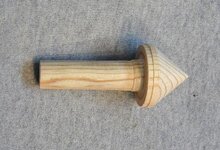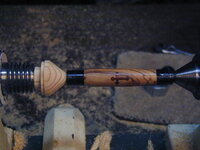Getting plastic bushings is covering up a problem and not solving it.
You shouldn't be sanding the bushings, and the simple solution to the problem is to not sand them. This is easier to say than do, but there is a good possibility that the pen barrels will be smaller than the metal fittings on the pen when the bushing are sanded. Try sanding just down to the bushings, but NOT on the bushings themselves. This will make the pen barrels a wee bit oversized by a few 1/1000ths, but in most cases that will make for a better looking pen and nobody will know the difference.
There are several other things you can do with your sanding technique to avoid sanding the bushings.
Practice your turning tool techniques. The better the finish from the tool, the less sanding will be required, and the finer the grit you can start with. It will take some time and practice, but there really are some benefits from learning to use a skew chisel for making those finishintg cuts. Less sanding and with a finer grit is one of them.
Sand from the wood over the bushing, releasing the pressure on the sandpaper as you leave the wood, and not applying pressure again until you are back over the wood again. This will be applying finger pressure to the sandpaper in a figure-8 pattern, rather than a constant pressure on the paper. Do the same sanding pattern with the lathe OFF as when it is running.
Use less pressure on the sandpaper. The sandpaper will cut with just barely enough pressure to keep it in contact with the wood. This will remove less metal from the bushings when you do get the sandpaper on them. Always use fresh sandpaper, and don't try to extend the life of worn out sandpaper.
Start sanding with a finer grit. You didn't say, but there is less chance of getting metal dust on the wood if you start sanding with 240 than there is with 150-grit.
Now that your bushings are already sanded to a smaller size, finish them with a coat of CA glue the next time you finish a pen. Score the break line at the end of the pen barrel with a skew or the tip of a knife to make a clean break. Now when you make a pen, just sand down to the bushing, and if you sand over onto the glue, there will be no metal particles to contaminate the wood. Your bushings will last for years this way.
Even after doing all of these things, there will be some species of wood that just wants to get dirty. Yellowheart, Pau Amarillo, and Osage Orange are that way for me. The simple solution for me was to quit using them. There are too many attractive species available to waste time with those that are a problem.


